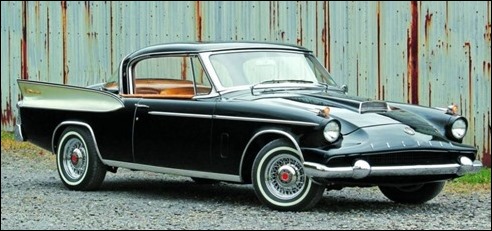Hemmings Tombstone talk: What caused Packard to fold?
Posted By RichC on April 21, 2018
It is probably the 1958 Packard Hawk photo on this particular Hemmings Daily post that caught my eye, but the article (and follow-up comments) are interesting too. I’ve archived the PDF of this post just in case it disappears.

Photograph by Thomas A. DeMauro
No single factor ever sinks an automaker. The struggle between profits and losses typically has its roots in circumstances suffered from decisions made years, if not decades, prior. Packard, one of the most prestigious American automakers, was no different, and a talk this weekend at the National Packard Museum will examine the various reasons behind its decline and death.
When Packard resumed building cars after World War II, it started from a relatively strong position and had many years of profitable business ahead of it; indeed, in 1949 the company sold nearly 105,000 cars, just short of its own production record. But the bricks in the company’s foundation were already starting to come loose in the late 1940s.
As Michael G.H. Scott pointed out in Packard: The Complete Story, due to a prewar concentration on lower-priced cars, “Packard was now geared for volume production of lower-priced cars” even though “many think Packard might have survived longer had it again concentrated only on the carriage trade after the war” and “the war’s end would have been a fine time for a fresh total-luxury approach.”
Comments